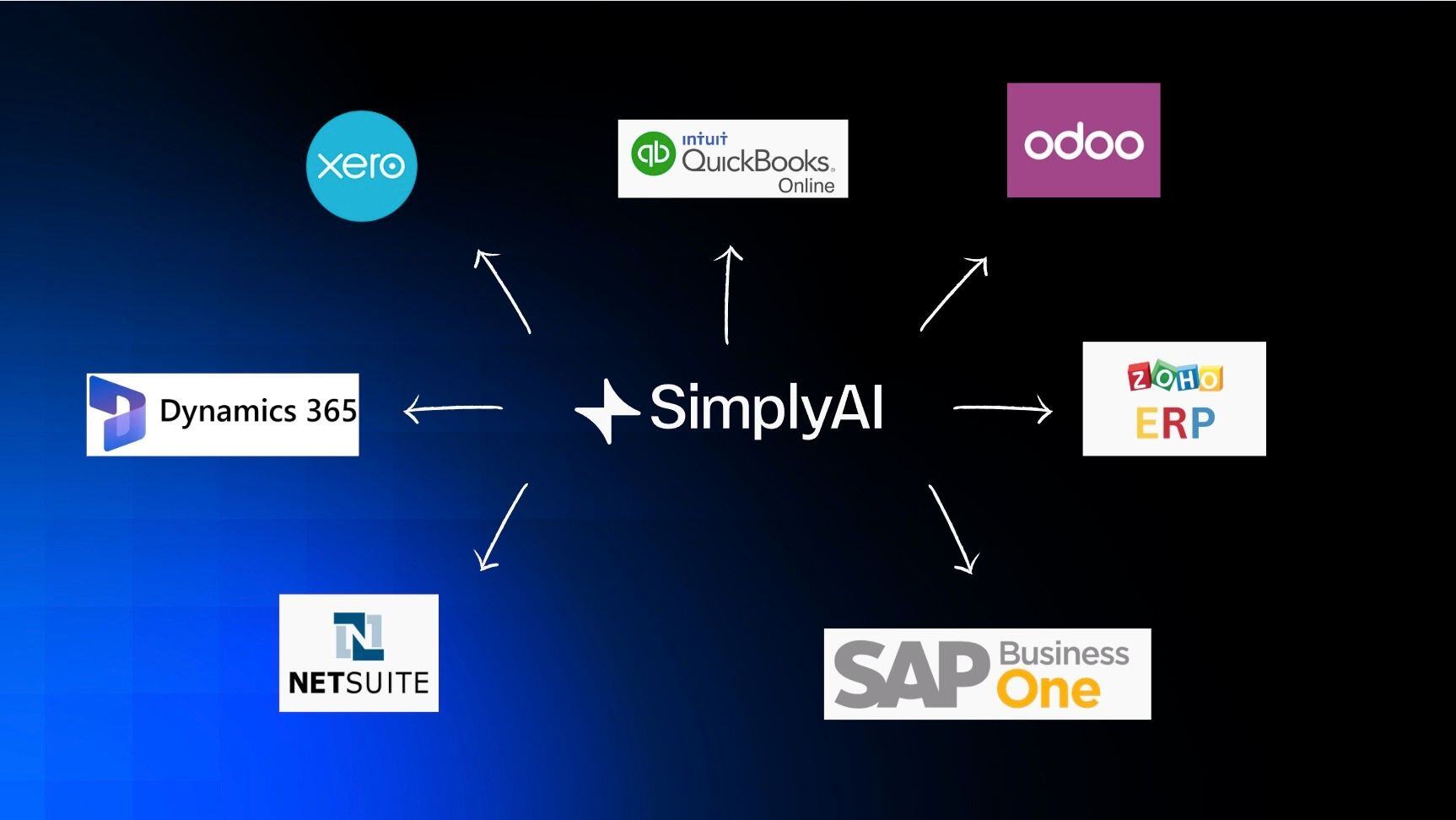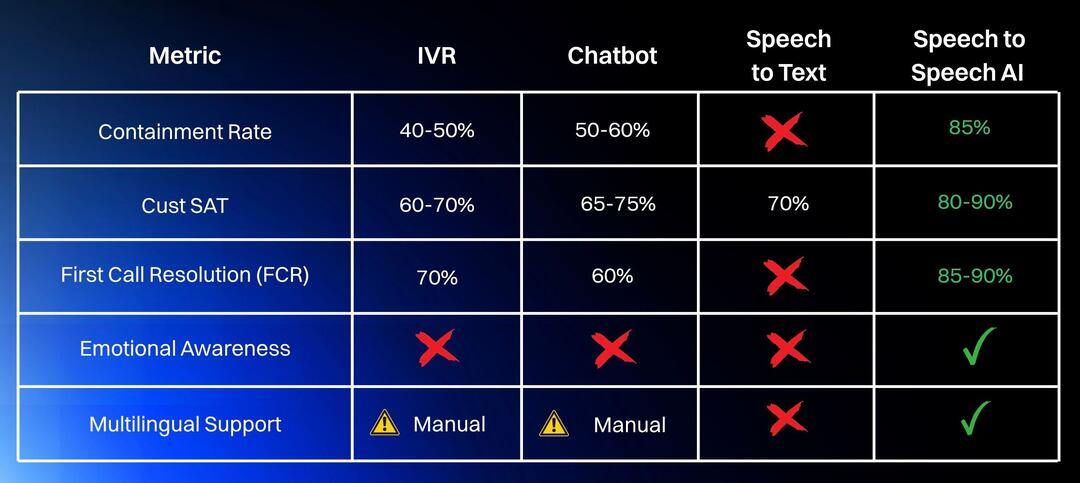Conversational AI - What does it offer the IT professional?
- Chapter I: Voice AI That Doesn’t Compromise Security or Compatibility
- Chapter II: Is Your Tech Stack Voice-Ready? What IT Managers Need to Know About Conversational AI
- Chapter III: Voice AI Readiness Checklist for IT Managers
- Chapter IV: Overcoming IT Manager Concerns with Voice AI in the Conversion Stage
- Chapter V: Case Study: Voice AI in Action for IT Managers
Voice AI That Doesn’t Compromise Security or Compatibility
Security-First Conversational AI for IT Teams
Our AI voice generator is built with enterprise-grade security in mind—GDPR, HIPAA, and CCPA compliant—featuring end-to-end encryption, zero-trust authentication, and role-based access controls. Designed for IT leaders prioritizing secure AI customer service, it ensures full alignment with your organization’s InfoSec policies.
Seamless Integration with Your Existing Stack
Our conversational AI platform integrates effortlessly with your existing CRM, ERP, and VoIP systems like Salesforce, HubSpot, RingCentral, and more. No infrastructure overhaul required. Whether you're deploying voice agents, AI chatbots, personal assistants, or advanced text-to-speech (TTS) capabilities, our platform supports a plug-and-play rollout.
Scale Without IT Complexity
Built on the latest in machine learning, natural language processing (NLP), and generative AI, our solution enables realistic, human-like conversations that scale with your business. From natural language understanding to voice cloning, our AI technologies support meaningful dialogue across channels—including web, phone, and social media—without adding IT burden.
Designed for Small and Medium Business AI Use Cases
Whether you're enhancing support automation, enabling AI-powered personal assistants, or transforming your contact center with artificial intelligence, our platform adapts to your most critical IT and business needs. With AI use cases ranging from self-service to outbound engagement, we deliver voice experiences that feel like real conversations—powered by deep learning and designed for the future of customer interaction.
To Help you see the difference in the relative performance of each technology, we have pulled the top research together for you from renowned resources like Forrester Gartner.
Integrating Voice AI with Your IT Stack (CRM, ERP, VoIP)
In today’s digital landscape, businesses are leveraging Voice AI to streamline operations, improve customer interactions, and enhance productivity. By integrating Voice AI with essential IT systems such as Customer Relationship Management (CRM), Enterprise Resource Planning (ERP), and Voice over Internet Protocol (VoIP), organisations can optimize workflows and gain a competitive edge.
Download the Technological Advances Summary
Why Integrate Voice AI with Your IT Stack?
Integrating Voice AI into your IT ecosystem automates workflows, improves efficiency, and enhances user experiences. By eliminating repetitive tasks, enabling real-time decision-making, and supporting seamless communication across business functions, Voice AI helps you meet rising customer expectations without increasing IT overhead.
Key Benefits of Voice AI Integration
Voice AI transforms your customer support operations by connecting with platforms like Salesforce, HubSpot, and Zoho. Using conversational AI chatbots and virtual agents, your CRM becomes a hub for intelligent, real-time engagement.
-
Automated Call Logging: With advanced speech recognition and automatic speech transcription, Voice AI logs and organizes customer interactions, eliminating manual data entry and reducing errors.
-
Real-Time Customer Insights: AI algorithms analyze voice interactions to deliver sentiment analysis, intent recognition, and predictive insights, helping teams respond more effectively.
-
Personalized Communication: By leveraging customer data stored in your CRM, AI assistants can hold natural conversations tailored to individual users—improving engagement across text or voice inputs.
Enterprise Resource Planning (ERP) solutions like SAP, Oracle, and Microsoft Dynamics can benefit from Voice AI by streamlining processes and enhancing efficiency. Integration benefits include:
- Hands-Free Data Entry: Employees can use voice commands to update inventory, track orders, and retrieve reports.
- Efficient Workflow Automation: AI-driven voice assistants automate procurement, finance, and supply chain tasks, reducing operational bottlenecks.
- Improved Decision-Making: Voice AI extracts valuable insights from ERP data, enabling faster and more informed decision-making.
VoIP systems such as Zoom, Microsoft Teams, and Cisco Webex integrate with Voice AI to enhance communication and collaboration. Key advantages include:
- AI-Powered Call Routing: Intelligent call routing ensures that customer inquiries reach the right agent, improving response times.
- Automated Transcription & Analysis: Voice AI transcribes conversations, offering keyword detection, sentiment analysis, and actionable insights.
- Virtual Assistants for Meetings: AI-powered assistants summarize discussions, schedule follow-ups, and provide contextual reminders.
Speech to Speech AI Agent Integration with CRMs / Telephony stack / ERPs
Whether it’s capturing conversations in natural language, generating thoughtful replies, or delivering chat that feels genuinely human, our solution is built for easy deployment.
If your CRM has an API, our Voice AI can connect to it quickly. It’s designed to work across telephony platforms too, with several already supported and more on the way.
From support desks to sales teams, our AI agents scale easily across departments, helping you automate tasks, answer complex questions, and improve every customer interaction.

See how speech interaction works with HubSpot’s CRM in the first video. The second video takes a closer look at the challenges.
Challenges in Voice AI Integration
Despite its benefits, integrating Voice AI with IT systems poses challenges such as:
Data Security & Compliance:
Interoperability Issues:
Training & Adoption:
Best Practices for a Successful Integration:
Choose the Right Voice AI Solution:
Prioritize Security & Compliance:
Leverage AI-driven Insights:
Ensure Scalability:
Provide Employee Training:
Conclusion
Integrating Voice AI with CRM, ERP, and VoIP systems revolutionizes customer interaction, operational efficiency, and internal communication. By leveraging machine learning algorithms and intelligent machine learning models, organizations can automate and personalize chat-like interactions that feel intuitive and human.
A well-executed Voice AI strategy enables businesses to boost customer satisfaction, capture real-time customer sentiment, and deliver more efficient and user-friendly experiences across every touchpoint. This not only improves service but also provides a competitive edge in an increasingly digital market.
✔ Case study: See how 5 Micro Business cut response times by 99%, increase next day bookings by +30%, Increase Leads by up to +320%—with zero impact on their IT infrastructure.
Ready to transform your customer experience with cutting-edge voice technology?
Is Your Tech Stack Voice-Ready? What IT Managers Need to Know About Conversational AI
There are 10 advancements that have enabled Speech to Speech AI
This simple table gives you what those advancements are.
In the previous Chapter we told you how Speech to Speech AI agents outperformed legacy solutions, IVR, Chatbots and in most use cases Speech to Text.

If Bill Gates is saying
"The future of computing will be a Voice, Speech Interface"
Then we know AI-powered voice interfaces will transition from buzzwords to essential business tools.
IT leaders remain rightfully cautious and we'd recommend putting the Speech To Speech Vendor through rigorous testing.
The Best way to do that is try it.
Before adopting any speech-to-speech consider these key factors:
Is it secure?
Will it integrate with our current systems?
Can we test it without disrupting our production environment?
This guide breaks down what top-tier AI voice technology vendors offer from an IT perspective—think SOC 2 and ISO 27001 certifications, plug-and-play APIs, and pilot environments that let you experiment before committing.
With today’s realistic voice platforms, there’s no need to overhaul your stack or retrain your team. The right voice AI solution adapts to your infrastructure, not the other way around.
Too often, IT is involved late in the process—just to verify security and integration. But modern AI voice generators go beyond compliance; they’re developer-friendly by design..
Lead Transformation
Secure, standards-compliant, and easy to integrate, these tools empower IT teams to lead transformation, not just support it. The best vendors don’t just showcase features—they provide:
✔ Sandbox testing for hands-on experimentation
✔ Clear documentation to streamline integration
We recommend the following path to success:
- Simple Demo Speech to Speech AI
- Followed by a simple Customer Service Agent implementation.
- Only in step three once you have tested the platform do you consider integration into:
- CRM
- ERP
- Marketing Platforms
- Telephony Providers
At Integration stage we recommend
✔ 24/7 support to ensure a smooth rollout
From voice changers to professional voiceovers, quality voices, and AI-powered voice content, the right solution should offer flexible options for developers, creators, and businesses alike.
Voice AI Readiness Checklist for IT Managers
Plug-and-Play API Access & SDK's
Clear Architecture Documentation
Comprehensive Integration Guides & Sample Code
Check if the provider offers easy-to-follow documentation and reusable code, helping developers implement text-into-speech, time-synced speech, and human-like voices faster.
Sandbox/Pilot Environment for Testing
Make sure you can experiment with different voices, test audio outputs, and refine configurations in a risk-free environment before full deployment.
7/7 Support During Rollout & Integration
Confirm that round-the-clock assistance is available, ensuring seamless integration without delays—especially when handling large-scale voice applications.
Minimal Retraining Required
Ensure your IT team can manage the platform with little to no additional training. The right solution should adapt to your existing workflows and provide a perfect voice experience for your audience without unnecessary complexity.
By verifying these capabilities, you can confidently adopt a voice AI solution that delivers high-quality audio, speech synthesis, and professional voice generation—without disrupting your operations.
Supporting content
IT Manager Concerns with Voice AI Agents
Make sure the Agents are tailored to your:
- Company Branding , Use Case , and improve Customer Service response times.
- Then Integrate with your Tech stack CRM, ERP and Telephony systems.
- Use the Customer Service Agent to test the vendor.
- Then drive operational efficiencies and cost savings.
Getting Your CFO onboard should be easy the Researched Returns on investment are: - IVR system v Speech to Speech AI Agent ROI Ratio 10:1
- Chatbot v Speech to Speech AI Agent ROI Ratio 14:1
- Speech to Text v Speech to Speech AI Agent ROI Ratio 21:1
Supporting content
- Use Case Library - see a SimplyAI agent in Action
- CFO Info Page
- CEO Info Page
- We can Build your own Tailored DEMO agent to show internal stakeholders for FREE - Takes 15 mins of Q & A session
Final Testing
We recommend thorough final testing of integrations to ensure they deliver against the use case.
Security & Compliance Audit
Get a detailed security whitepaper covering encryption, data policies, and compliance (SOC 2, HIPAA, GDPR), plus direct access to our InfoSec team through a live Q&A.
Support SLA's - Clearly Defined SLA
Present a Service Level Agreement (SLA) outlining uptime guarantees, response times, and escalation procedures, ensuring alignment with IT expectations.
Case Study: Voice AI in Action for IT Managers
From Our Blog
Stay up to date with what is new in our industry, learn more about the upcoming products and events.

From overflowing calls to 24/7 service: AI Agent ROI in 30 Days

The Voice Revolution: Transforming Digital Customer Interaction



